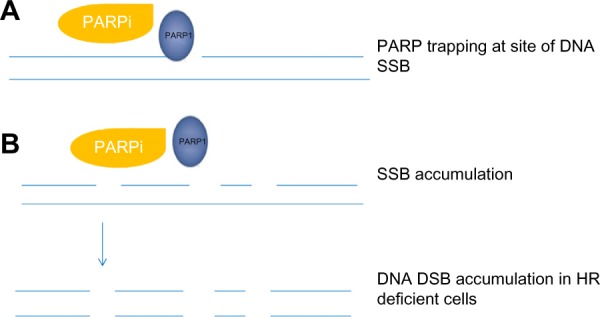Figure 3.

PARP inhibitor – mechanism of action.
Notes: (A) PARP attaches to site(s) of DNA damage and is unable to dissociate due to inhibition of PARP autoPARylation causing PARP trapping and cytotoxic PARP–DNA complexes. The degree of ‘PARP trapping’ appears to vary between the different inhibitors currently under investigation and may explain the differences in toxicity profile observed, with olaparib and niraparib having greater potency compared to veliparib.54 (B) SSBs accumulate, leading to DSBs, which are unrepaired in cells deficient in HR proteins, ultimately leading to cell death.
Abbreviations: DSBs, double-strand DNA breaks; HR, homologous recombination; PARP, poly (adenosine diphosphate [ADP]) ribose polymerase; SSBs, single-strand DNA breaks.
